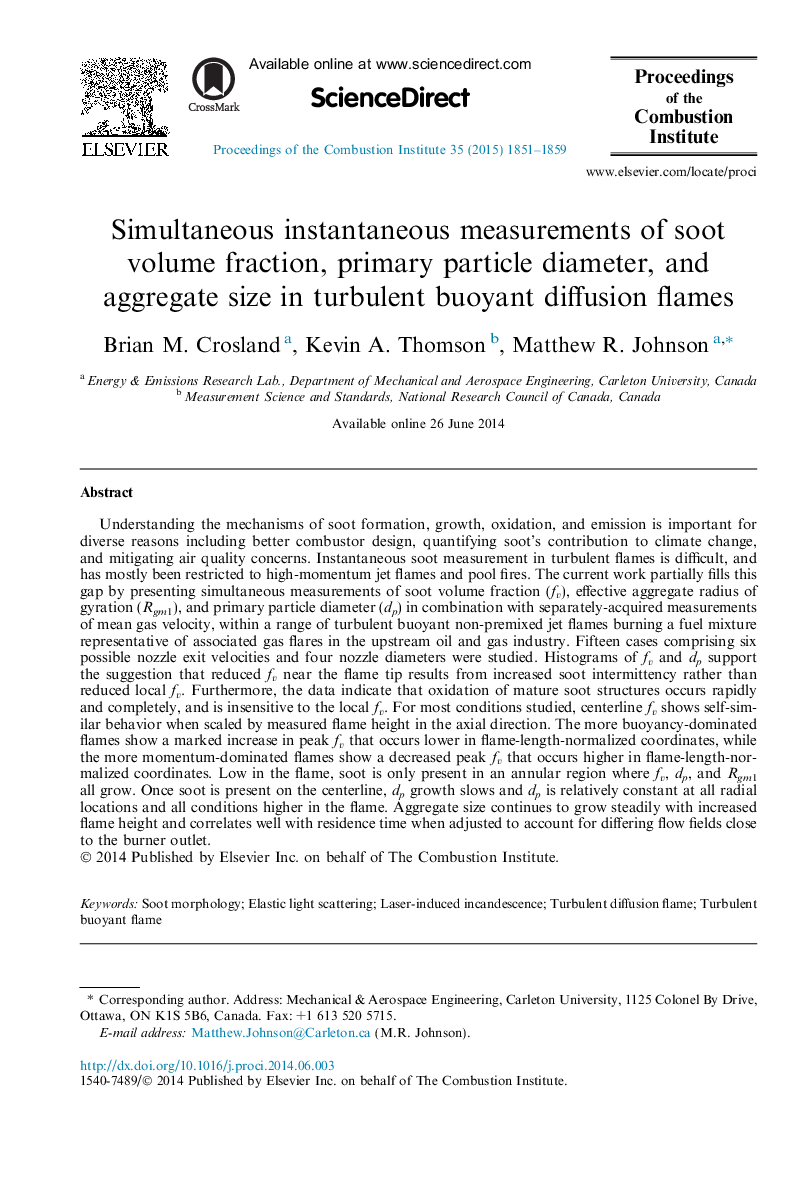| Article ID | Journal | Published Year | Pages | File Type |
|---|---|---|---|---|
| 6679329 | Proceedings of the Combustion Institute | 2015 | 9 Pages |
Abstract
Understanding the mechanisms of soot formation, growth, oxidation, and emission is important for diverse reasons including better combustor design, quantifying soot's contribution to climate change, and mitigating air quality concerns. Instantaneous soot measurement in turbulent flames is difficult, and has mostly been restricted to high-momentum jet flames and pool fires. The current work partially fills this gap by presenting simultaneous measurements of soot volume fraction (fv), effective aggregate radius of gyration (Rgm1), and primary particle diameter (dp) in combination with separately-acquired measurements of mean gas velocity, within a range of turbulent buoyant non-premixed jet flames burning a fuel mixture representative of associated gas flares in the upstream oil and gas industry. Fifteen cases comprising six possible nozzle exit velocities and four nozzle diameters were studied. Histograms of fv and dp support the suggestion that reduced fv near the flame tip results from increased soot intermittency rather than reduced local fv. Furthermore, the data indicate that oxidation of mature soot structures occurs rapidly and completely, and is insensitive to the local fv. For most conditions studied, centerline fv shows self-similar behavior when scaled by measured flame height in the axial direction. The more buoyancy-dominated flames show a marked increase in peak fv that occurs lower in flame-length-normalized coordinates, while the more momentum-dominated flames show a decreased peak fv that occurs higher in flame-length-normalized coordinates. Low in the flame, soot is only present in an annular region where fv, dp, and Rgm1 all grow. Once soot is present on the centerline, dp growth slows and dp is relatively constant at all radial locations and all conditions higher in the flame. Aggregate size continues to grow steadily with increased flame height and correlates well with residence time when adjusted to account for differing flow fields close to the burner outlet.
Keywords
Related Topics
Physical Sciences and Engineering
Chemical Engineering
Chemical Engineering (General)
Authors
Brian M. Crosland, Kevin A. Thomson, Matthew R. Johnson,
